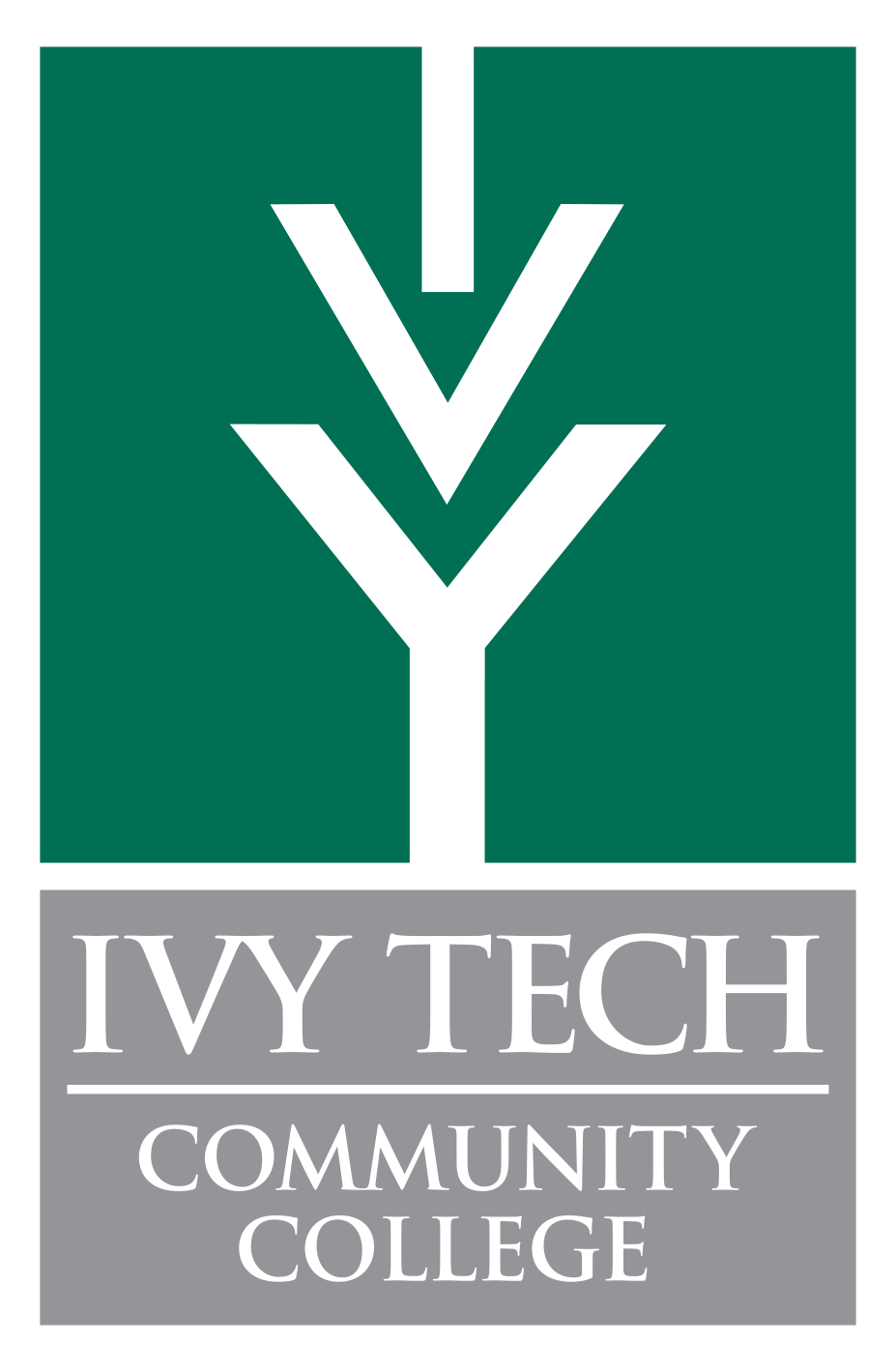| Campus | Certificates | Associate Degrees |
|---|
| Major | Certificates | Associate Degrees |
|---|
*See About page for limitations of estimated job openings by education level.
This tool, developed by the Indiana Department of Workforce Development in collaboration with Ivy Tech Community College, provides policy-makers, employers, educational institutions, job seekers, and other stakeholders with supply data related to Ivy Tech Community College program completions, and long-term, annualized, projected demand data needed to make strategic workforce planning decisions.
The tool displays data by region on credential completions at Ivy Tech Community College and projected job openings by the Department of Workforce Development. Data from the Occupational Information Network (O*NET) is used to estimate the number of job openings that might correspond to the credentials awarded.
O*NET, developed under sponsorship of the US Department of Labor/Employment and Training Administration, is the nation’s primary source of occupational information. The online database is continually updated by surveying a broad range of workers from each occupation.
Important limitations of this tool:
- Annual job openings are based on long-term projections of occupational employment. These projections factor out shorter-term cyclical effects in order to provide a general estimate of the magnitude and direction of employment by occupation.
- Projected job openings represent job opportunities for all entrants into an occupation, not just for new graduates or new entrants into the labor force. Many of these jobs may be filled by workers moving between occupations or by workers who immigrate from other places.
-
Using O*NET to apportion projected openings to education levels will not be accurate when:
- Occupational requirements in Indiana differ from the occupational requirements nationally;
- Occupational requirements of job openings are significantly different from the requirements of existing jobs; or
- Occupational requirements change significantly over time.
- Occupation clusters that are not related to programs offered by Ivy Tech Community College are not included in the tool.
- Credentials awarded by other educational or training institutions are not included in the tool.
Data Sources
The tool uses the following data sources:
- Long-term (2014-2024) projections, developed in cooperative partnership with the State of Indiana Department of Workforce Development and the Bureau of Labor Statistics, of occupational employment by Economic Growth Region. Summing projections for all regions will not typically add up to the statewide projections.
- Regional projections by industry sector for calculating the numbers by Key Economic Sector, or top sectors with immediate needs qualified by projected demand, supply and wage data. Key Economic Sectors for the purpose of this mapping tool include: Agriculture, Construction, Healthcare, Information Technology, Manufacturing, and Transportation and Logistics. Only the indicated sectors are included, and summing all sectors will not add up to the total projections for a region.
- Ivy Tech data on enrollment and credential completions for the 2014-2015 school year. For students earning multiple credentials in the school year, only the highest and most recent credential is included.
- O*NET Education Data: O*NET 21.0 is a comprehensive database of worker attributes and job characteristics, including the range of education required for employment in an occupation. O*NET gathers data from a sample of workers in each occupation. For more information on O*NET Online, visit: http://online.onetcenter.org, and for more information on the O*NET data collection process, visit: https://onet.rti.org/survey.cfm.
Definitions
Occupation Cluster: Customized groupings of major fields of study (CIP codes) and detailed occupations (SOC Codes) for the purposes of comparing supply and demand of skilled labor.
Total Openings: The total number of projected annual openings (2014 - 2024) for an occupation at all education levels in all industry sectors. This number may be lower than the statewide projections because projections are not available in some regions (shown as "NR" on the map).
Applicable Openings: The number of projected annual job openings (growth and replacement) in an occupation multiplied by the percentage of jobs requiring more than a high school diploma and less than a bachelor's degree according to O*NET. Exception: When the Bureau of Labor Statistics indicates that an apprenticeship is required to enter an occupation, 100% of the openings are considered applicable openings.
Credential Recipients: The number of students awarded associate degrees or certificates by Ivy Tech Community College in the 2014-2015 school year. Does not include credentials awarded by other institutions. When a student earned more than one credential in the school year, the highest and most recent credential is used. Apprenticeships are not listed separately from associate degrees.
Remaining Openings: Number of Applicable Openings awarded minus the number of Ivy Tech credential recipients.
Key Economic Sectors are sectors that have been identified as having immediate workforce needs. This tool uses industry staffing patterns to identify the portion of projected openings that occur in these sectors, using NAICS industry sectors as described below:
| Key Economic Sector | NAICS Industry Sector |
|---|---|
| Agriculture | Defined by occupation (see below) |
| Construction | 23 Construction |
| Information Technology | Defined by occupation (see below) |
| Manufacturing | 31-33 Manufacturing |
| Transportation, Distribution and Logistics | 42 Wholesale Trade 48-49 Transportation and Warehousing |
| Healthcare | 62 Healthcare and Social Assistance |
Ivy Tech credential numbers are also apportioned by the same amount, so if 40% of an occupation cluster's projected openings are in the Manufacturing sector, 40% of Ivy Tech credential recipients in that cluster will be allocated to that sector.
Due to confidentiality, some projections of job openings by occupation by industry are not available. On the map, "NR" indicates that no projection information is available, while a dagger symbol (†) indicates that some, but not all occupations in an occupation cluster have been excluded.
The Agriculture and Information Technology sectors are defined by occupation rather than industry, so there can be overlap between these sectors and the other sectors (e.g. database administrators in the healthcare industry sector). The Agriculture sector contains the following occupations defined by the Standard Occupation Classification (SOC) System:
| SOC Code | SOC Title |
|---|---|
| 11-9013 | Farmers, Ranchers, and Other Agricultural Managers |
| 19-4011 | Agricultural and Food Science Technicians |
| 45-1011 | First-Line Supervisors of Farming, Fishing, and Forestry Workers |
| 45-2092 | Farmworkers and Laborers, Crop, Nursery, and Greenhouse |
| 45-2093 | Farmworkers, Farm, Ranch, and Aquacultural Animals |
The Information Technology sector contains the following occupations defined by the Standard Occupation Classification (SOC) System:
| SOC Code | SOC Title |
|---|---|
| 11-3021 | Computer and Information Systems Managers |
| 15-1111 | Computer and Information Research Scientists |
| 15-1121 | Computer Systems Analysts |
| 15-1122 | Information Security Analysts |
| 15-1131 | Computer Programmers |
| 15-1132 | Software Developers, Applications |
| 15-1133 | Software Developers, Systems Software |
| 15-1134 | Web Developers |
| 15-1141 | Database Administrators |
| 15-1142 | Network and Computer Systems Administrators |
| 15-1151 | Computer User Support Specialists |
It is important to note that the Key Economic Sectors represent only a subset of employment, and the sum of job openings in all the sectors will not add up to the total projected job openings in all industry sectors.

